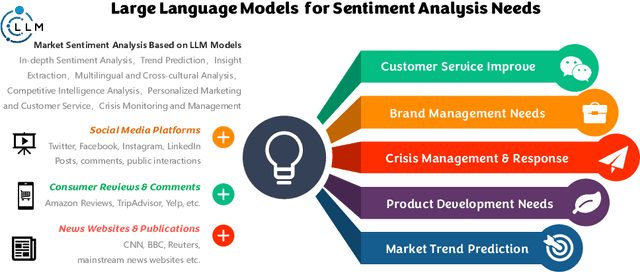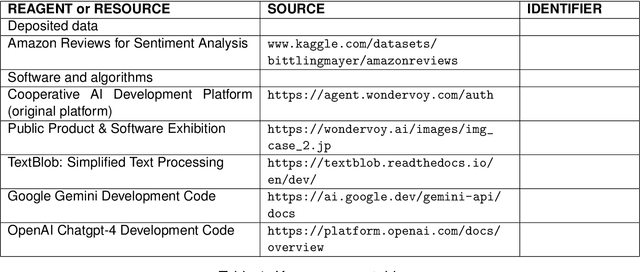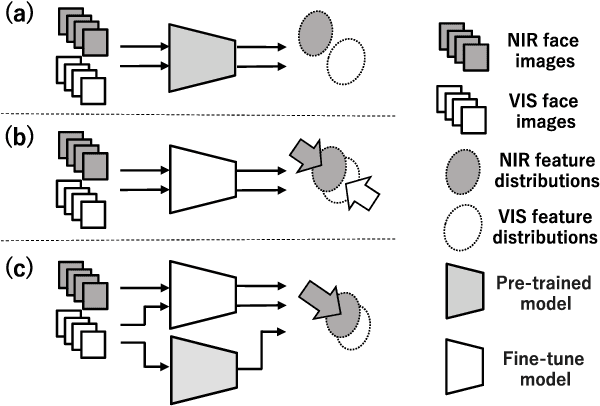Hiroshi Hashimoto
Enhancing Sentiment Analysis with Collaborative AI: Architecture, Predictions, and Deployment Strategies
Oct 17, 2024



Abstract:The advancement of large language model (LLM) based artificial intelligence technologies has been a game-changer, particularly in sentiment analysis. This progress has enabled a shift from highly specialized research environments to practical, widespread applications within the industry. However, integrating diverse AI models for processing complex multimodal data and the associated high costs of feature extraction presents significant challenges. Motivated by the marketing oriented software development +needs, our study introduces a collaborative AI framework designed to efficiently distribute and resolve tasks across various AI systems to address these issues. Initially, we elucidate the key solutions derived from our development process, highlighting the role of generative AI models like \emph{chatgpt}, \emph{google gemini} in simplifying intricate sentiment analysis tasks into manageable, phased objectives. Furthermore, we present a detailed case study utilizing our collaborative AI system in edge and cloud, showcasing its effectiveness in analyzing sentiments across diverse online media channels.
Joint Feature Distribution Alignment Learning for NIR-VIS and VIS-VIS Face Recognition
Apr 25, 2022



Abstract:Face recognition for visible light (VIS) images achieve high accuracy thanks to the recent development of deep learning. However, heterogeneous face recognition (HFR), which is a face matching in different domains, is still a difficult task due to the domain discrepancy and lack of large HFR dataset. Several methods have attempted to reduce the domain discrepancy by means of fine-tuning, which causes significant degradation of the performance in the VIS domain because it loses the highly discriminative VIS representation. To overcome this problem, we propose joint feature distribution alignment learning (JFDAL) which is a joint learning approach utilizing knowledge distillation. It enables us to achieve high HFR performance with retaining the original performance for the VIS domain. Extensive experiments demonstrate that our proposed method delivers statistically significantly better performances compared with the conventional fine-tuning approach on a public HFR dataset Oulu-CASIA NIR&VIS and popular verification datasets in VIS domain such as FLW, CFP, AgeDB. Furthermore, comparative experiments with existing state-of-the-art HFR methods show that our method achieves a comparable HFR performance on the Oulu-CASIA NIR&VIS dataset with less degradation of VIS performance.
* 8 pages, 5 figures. Accepted at IJCB 2021
 Add to Chrome
Add to Chrome Add to Firefox
Add to Firefox Add to Edge
Add to Edge